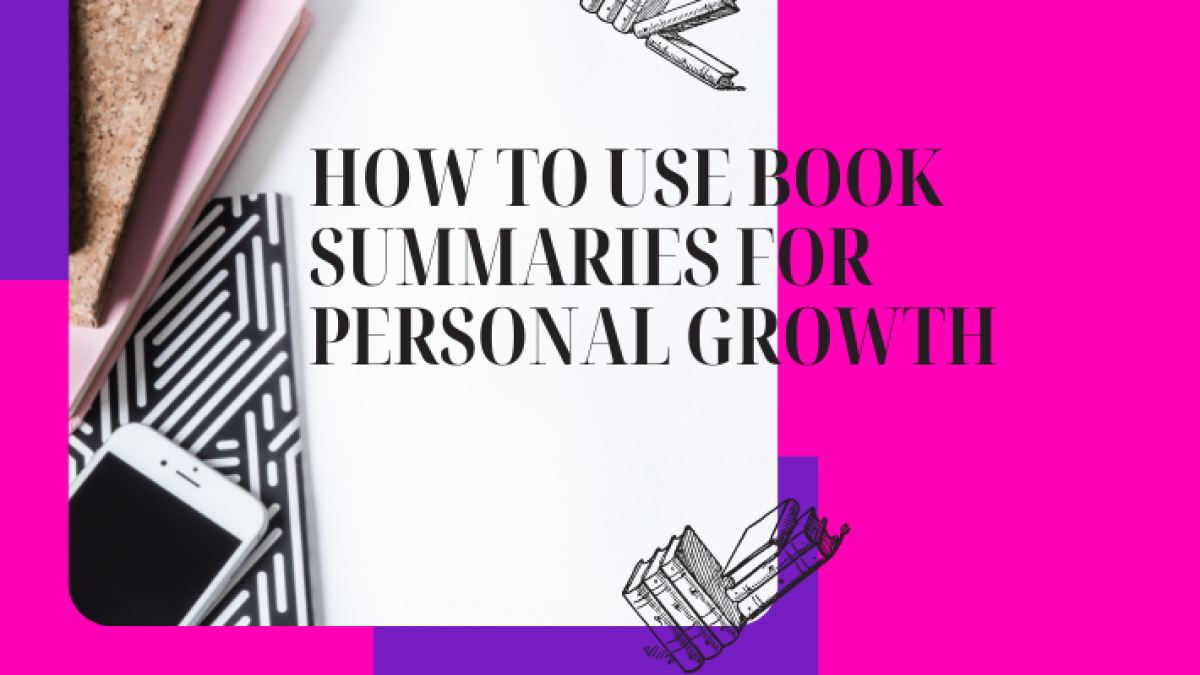How to Use Book Summaries for Personal Growth

The pace of modern-day life makes it difficult for professionals to find time to read. Let me teach you how to use book summaries for personal growth.
Reading a book is nearly always better than reading a summary of it. Except if it’s a business book that should have been a journal article. It’s my belief that a book summary complements the book, and is not a replacement. I recommend to clients and readers that they should read a good summary of a nonfiction book before reading the book. When you do this, you’ll read the book a lot faster. However, if reading a book summary is all you can manage because of lack of time, let me teach you how to use book summaries for personal growth.
I’m always looking for ideas and ways to read more effectively. Or to get more out of my reading time. I subscribe to book summaries. And I use them in two very specific ways. First, I read them before I read the corresponding book, so that I can get familiar with the book’s content. This also helps me to read the book faster because I know which sections and chapters in the book to focus on.
Second, reading a book summary lets me know if I really want to read the book. Some books are simply not worth the investment in time to read them. All books are not created equally. And with less than stellar books, it’s often the case that the book summary has all the information that you need to know.
What Challenges Are You Facing?
All of us have challenges that we face personally and professionally. And it makes sense that you’ll always be on the lookout for ways to resolve the challenges. More than likely, you also have questions you need answers to. So, to get the process started, make a list of the challenges and problems you want to solve. As well as the questions you want to answer.
Using myself as an example. I have a membership site, the Art of Learning. And a question that I think about every day, is how do I get subscribers? I do the easy things, like including a link to the membership site in my weekly newsletter and telling people about it at virtual events. However, the primary way I learn is by reading books.
Find Appropriate Book Summaries
When you have your list, the next step is to find appropriate books that would likely have the information you need. Ask your friends, family, or even colleagues for book recommendations. You could even call a librarian at your public library. Finding the right books is the more difficult part of what you’re trying to do. Once you find the books, the easier thing to do is to find book summaries of those books.
Last year, I bought the lifetime deal for 12min book summaries. For the books I plan to read, I usually search the app to see if they have a summary of it. But many times, I simply read summaries there because I have access to them. But this was not an intentional act. It suddenly occurred to me that I should be taking notes while reading these summaries. And that’s what I want to explore today. Before I do that, I want to also say that there are a couple of places that I go to for free book summaries.
Although it’s not free, you could become a member of the Art of Learning, my membership site. You’ll find lots of Bookish Notes there.
Use Book Summaries for Personal Growth
Think of an author as your mentor. You want more than one mentor, since it’s impossible to get everything you need from one person. With this in mind, it’s important to have access to different summaries of the same book. I would recommend at least three, so you have diverse perspectives on the topic.
While you’re reading each summary, take notes. Then read through your notes a few times. After you’ve done that, pick out the big ideas from your notes. If the summaries have any models, processes, or techniques, make sure you capture those. Activate knowledge from the book summaries, by combining the big ideas across the various summaries. And do the same for the models, processes and techniques.
This allows you to see what others miss. But more importantly, activating knowledge allows you to make the information yours. When you follow this process in an attempt to resolve challenges you face, or answer questions you have, it’s impossible for you not to grow personally. You’re engaging in active reading.
I’ve successfully used this process when reading books. But there’s no reason why it wouldn’t work for book summaries as well. I’m definitely going to try it. By the way, to use the process, I usually create a table, having a column for each book. I add the big ideas and the models, processes and so on to the table. Then I quickly scan across the columns and start combining the big ideas and the models and processes. You can formalize the process if you choose to.
Conclusion: How to Use Book Summaries for Personal Growth
I understand the busyness and pressures of modern-day life. And there’s no reason why you shouldn’t be able to grow professionally simply because you’re over-scheduled. Many professionals face realities in life, like childcare and eldercare, and many other things. But I’m sure you can find 15-minute pockets in your days to read a book summary and capture the important points.
So this is my recommendation on how to use book summaries for personal growth. Give it a try and let me know how it works for you.
Please consider joining my membership site, the Art of Learning.
Categories: : book summaries, personal growth, Reading
 Avil Beckford
Avil Beckford 